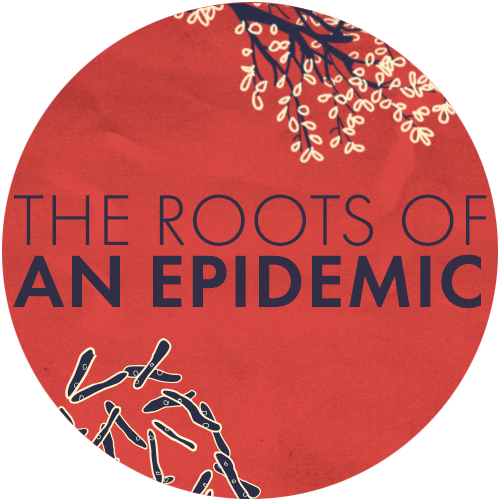
Read the previous installment: “The Gendered Realities of the Tuberculosis Epidemic”

Is smoking “unladylike”? Do “real men” avoid asking for help if they’re feeling sick? Gender–including stereotypes like these–can influence the risk of diseases like tuberculosis, as well as diagnosis and treatment.
Understanding gender dynamics and biases is important for designing both effective TB responses and health systems more broadly–it can help people delivering services alleviate, rather than reinforce, existing inequities.

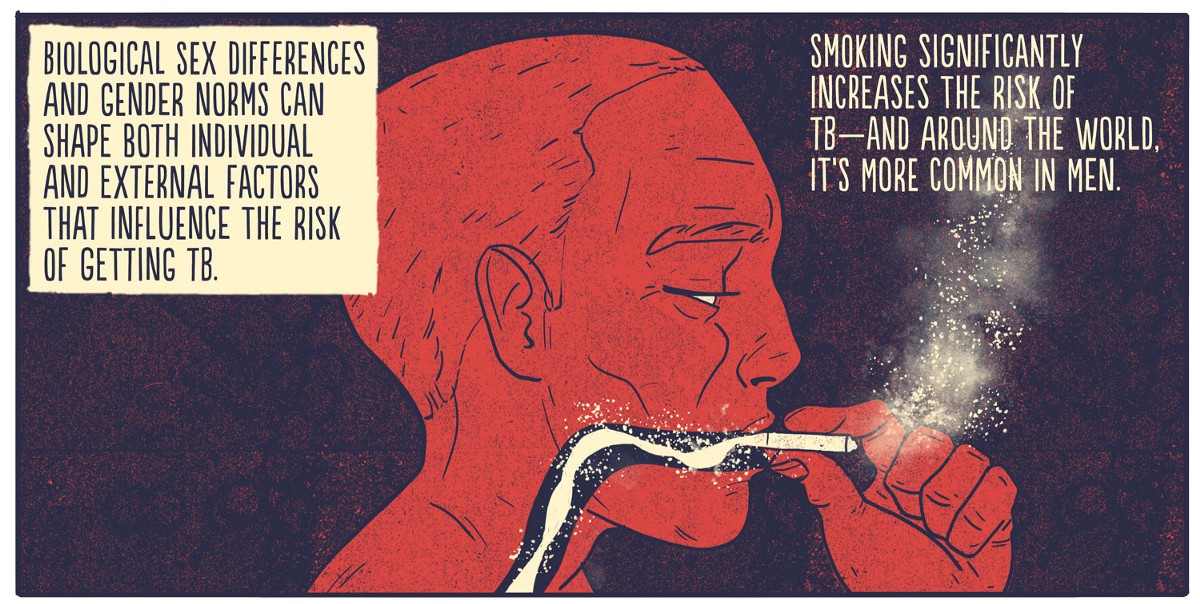

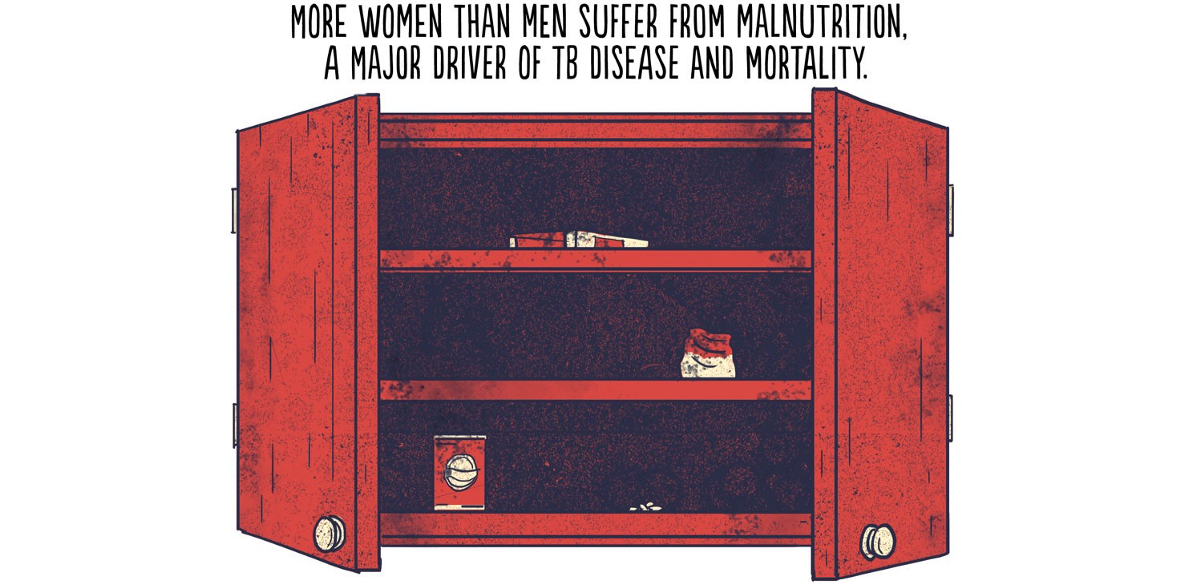

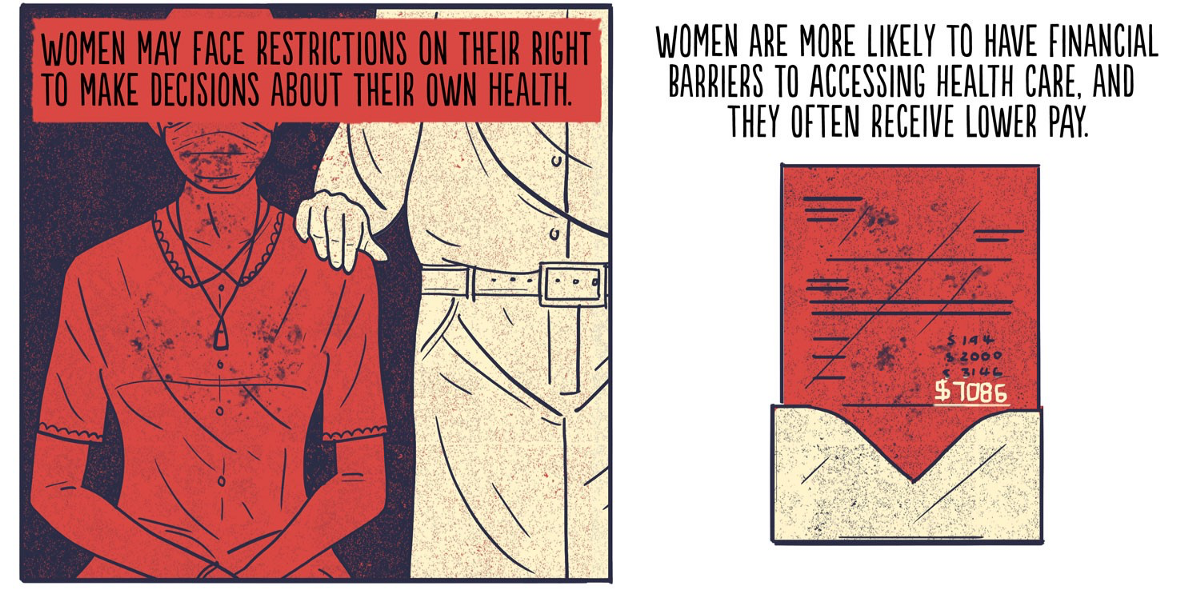
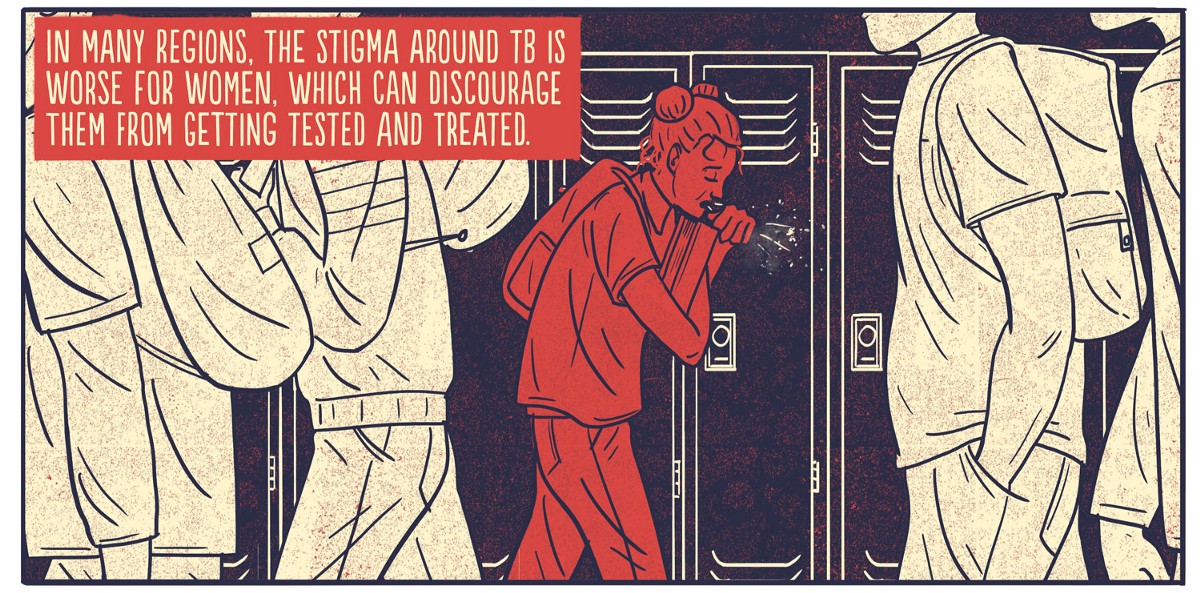
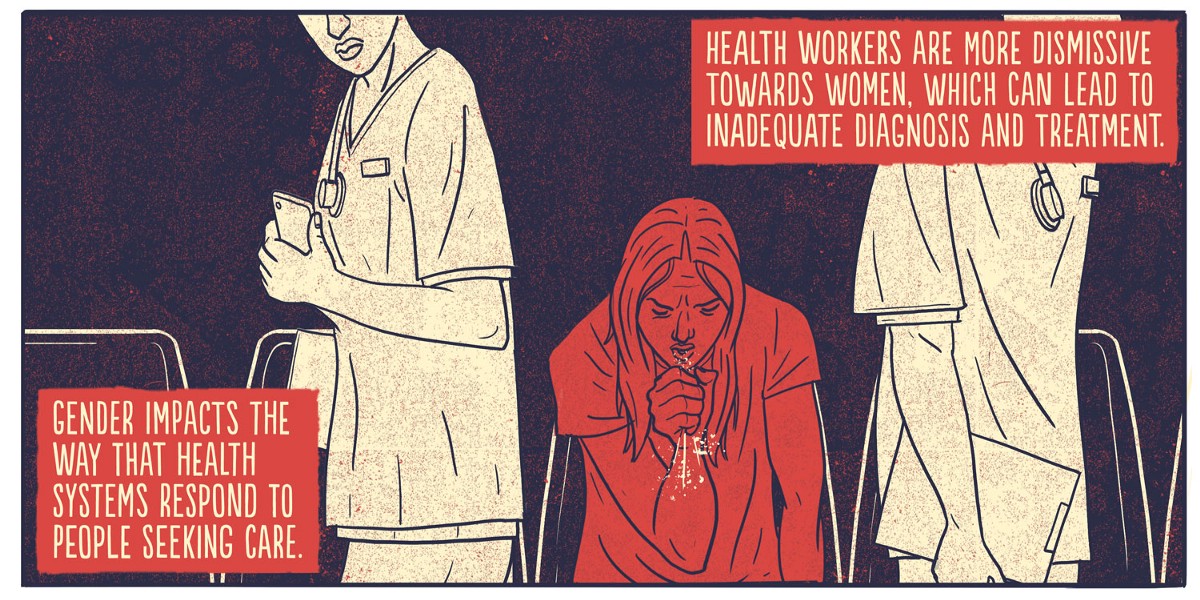
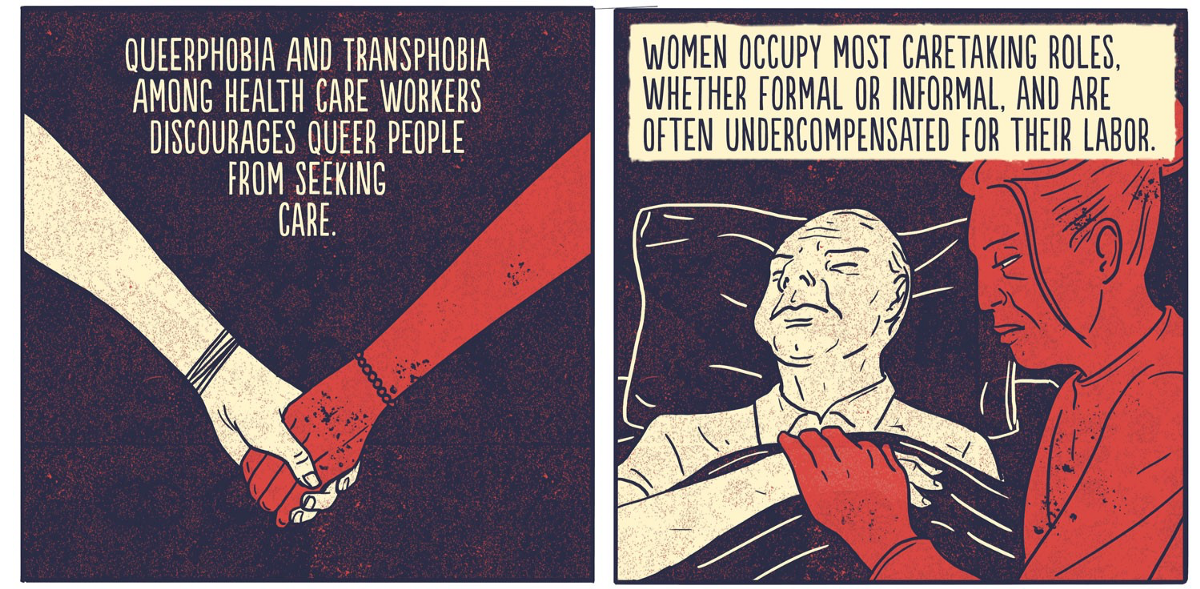


Words by Paula Akugizibwe
Illustrations by Darren Garrett

Footnotes
Panel 5: Other factors related to poverty–which disproportionately affects women–are also associated with TB.
Panel 10: In some settings, this is tied to the belief that women with TB will be infertile (see panel 17).
Panel 12: This bias has been observed for various medical conditions, including pain.
Panel 13: Read about a transgender sex worker’s experience with TB and social stigma here. Past efforts ensure that the global health agenda is inclusive of queer and trans rights have been met with resistance.
Panel 16: Greater mobility may contribute to this–for example, employment-related migration or financial freedom to move between providers.
Panel 17: Genital TB is increasingly recognized as a major contributor to infertility in some settings.

Read the previous installment: “The Gendered Realities of the Tuberculosis Epidemic”

How We Get To Next was a magazine that explored the future of science, technology, and culture from 2014 to 2019. The Roots of an Epidemic is a four-part series on tuberculosis, the leading cause of death from an infectious agent around the world.
